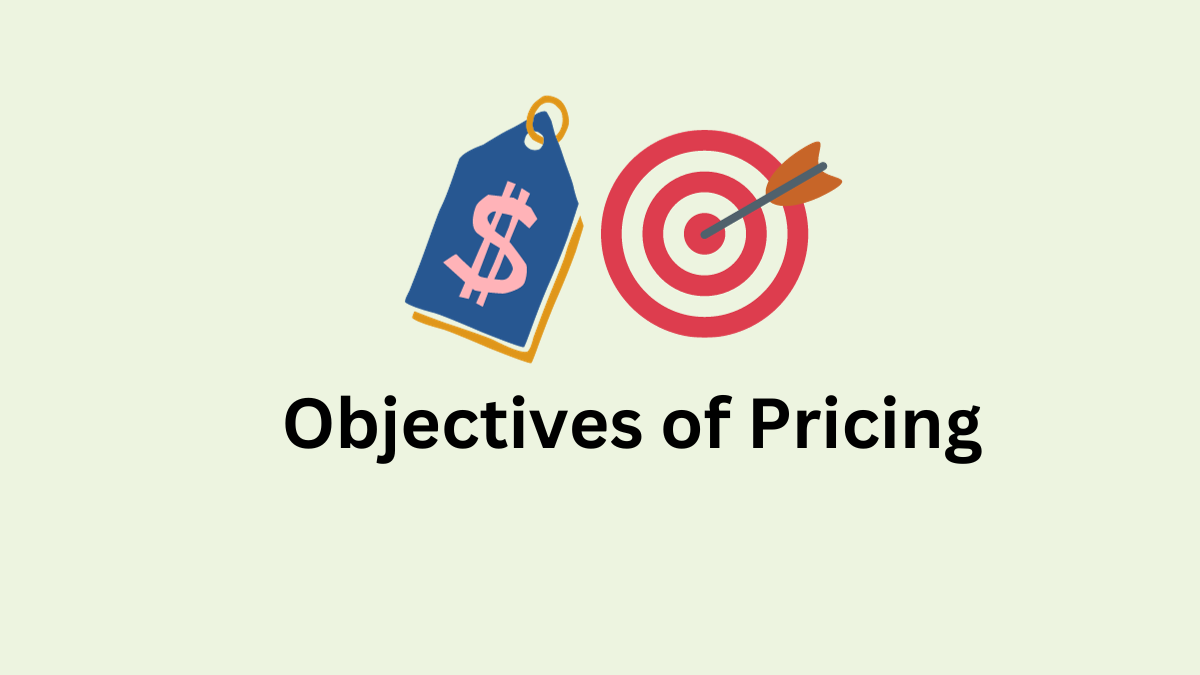Objectives of Pricing
In marketing, the objectives of pricing include three – profit-oriented objective, sales-oriented objective, and status-quo objective. Let’s define and understand each of them:
Profit Oriented Objectives
Profit-oriented objectives of pricing, as its name suggests, are set to increase the profit of the business firm. The following are the two objectives that come with it:
Achieve Target Return
This profit-oriented pricing objective focuses on setting prices to ensure a specific rate of return on investment. Companies calculate their costs, including production, operational, and marketing expenses, and then add a predetermined percentage as a markup to achieve the desired profit margin.
For instance, if a company invests $50,000 in producing a new product and aims for a 20% return on investment, it would set the price to cover costs and generate a $10,000 profit. Achieving target return ensures that the business sustains itself and grows steadily over time while meeting financial goals.
Maximizing Profit
Maximizing profit is a more aggressive pricing objective where a company aims to generate the highest possible profit from its products or services. This objective involves strategic pricing decisions that balance customer affordability with profit margins.
For example, a luxury fashion brand might price its exclusive line significantly higher, targeting affluent customers willing to pay a premium for superior quality and exclusivity. By carefully gauging consumer willingness to pay and production costs, the company maximizes profits without compromising its brand image.
Sales Oriented Objectives
Some companies focus on sales volume rather than profit. Large companies focus on sales-oriented pricing objectives for two main reasons – to increase sales volume and to increase market share:
Increase Sales Volume
Increasing sales volume is a sales-oriented pricing objective where a company focuses on selling more units of its products or services. To achieve this, businesses often set competitive prices, run promotional campaigns, or offer discounts to attract more customers.
Read More: The 10 Importance of Pricing in Business
For example, during the holiday seasons, retailers may lower the prices of various items, encouraging shoppers to buy more. By making products affordable and appealing to a larger customer base, companies can boost their sales numbers, leading to higher overall revenue despite lower individual profit margins.
Maintain/Increase Market Share
Maintaining or increasing market share is another sales-oriented pricing objective that emphasizes a company’s position in the market concerning its competitors. Market share represents the portion of total sales a company captures in its industry.
To maintain or increase market share, businesses might implement strategic pricing, such as setting competitive prices or offering additional value through bundled products or services. For instance, a telecommunications company could introduce a package deal that includes internet, phone, and TV services at a slightly lower price than competitors.
By providing value and attracting more customers, the company maintains or expands its market share, solidifying its presence in the industry. This objective ensures the company’s products or services remain popular and widely adopted, reinforcing its position in the market landscape.
Read More: 6 Characteristics of Service in Marketing
Status Quo Objectives
The status quo objective can be described as the “don’t-rock-the boat” objective. The big companies to minimize the risk and maintain their status or goodwill in the market adopt this strategy. Status quo objectives are the least aggressive of any pricing objectives. These objectives are related to:
Price Stabilization
Price stabilization is a status quo pricing objective that focuses on maintaining steady prices for a product or service over a specific period. This approach aims to create a sense of reliability and trust in the market by preventing price fluctuations.
An example of price stabilization is seen in the pricing strategies of well-established utility companies that provide essential services like electricity or water. These companies often maintain consistent pricing for extended periods, ensuring that customers can rely on stable rates without sudden increases or decreases. Price stabilization is particularly valuable when customers prefer predictability in their expenses.
Read More: Product Vs. Service: 10 Difference
Meeting Competition
The “meeting competition” status quo pricing objective centers around setting prices to align with the prevailing rates in the market. Companies adopting this approach closely monitor the pricing strategies of their competitors and adjust their own prices accordingly.
For instance, in the smartphone industry, when one major brand reduces the price of its flagship model, competitors may follow suit to remain competitive. Meeting competition is about keeping pace with market norms to avoid standing out with unusually high or low prices.
It ensures that a company’s pricing aligns with customer expectations, promoting a sense of fairness and market conformity. This objective minimizes risks associated with deviating significantly from industry-standard pricing practices.
Read Next: 10 Factors Affecting Product Pricing
Arti Kushmi holds a BBS (Bachelor in Business Studies) degree and shares her business and marketing knowledge through this website. While not writing she will be reading and enjoying the moment.
